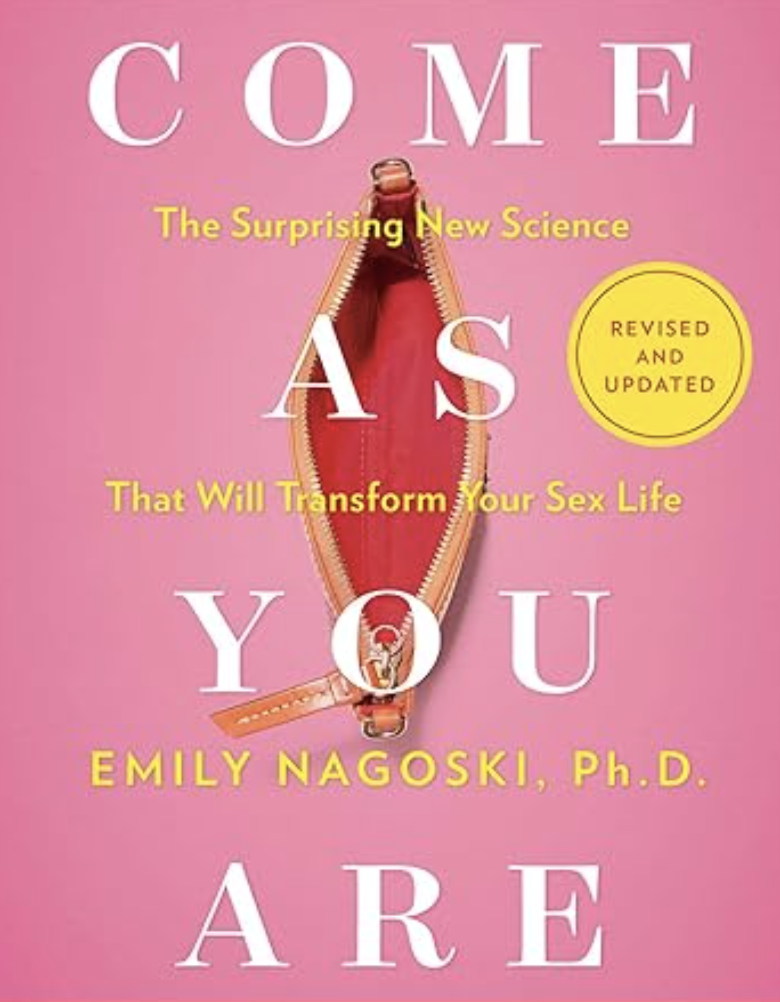
Ashkenazi Jewish history and genetics are deeply intertwined with their religious identity, specifically through their unique minhagim (customs), within the broader context of how identity is defined by various factors. The sources provide a comprehensive overview of how these elements have shaped Ashkenazi Jewish distinctiveness and how they are understood today.
Ashkenazi Jews are a distinct subgroup of the Jewish diaspora that emerged in the Holy Roman Empire around the end of the first millennium CE. The term "Ashkenazi" initially referred to a distinct cultural group of Jews who settled in the 10th century in the Rhineland, in western Germany.
Historically, Ashkenazi Jews originate from the Israelites and Hebrews of ancient Israel and Judah. Jewish communities began to form in southern Europe from the fourth century BCE due to various push and pull factors, including wars, persecution, unrest, and opportunities in trade and commerce. Following the Roman conquest of Judea and subsequent revolts (66–73 CE and 132–136 CE), many Jews were captured and sold into slavery, leading to a significant Jewish diaspora across southern Europe.
By the Early Middle Ages, Jewish merchants settled north of the Alps, and by the 11th century, settlers from southern European and Middle Eastern centers began to settle along the Rhine in response to economic opportunities and invitations from Christian rulers. Key cities like Speyer, Worms, and Mainz became crucial in forming Ashkenazi Jewish religious tradition. Over centuries, persecutions and expulsions from England (1290), France (1394), and parts of Germany (15th century) pushed Ashkenazi Jewry eastward into Poland, Lithuania, and Russia, which became major centers of Ashkenazi life until the Holocaust.
In modern history, Ashkenazi Jews underwent a cultural reorientation due to the Haskalah (Jewish Enlightenment) and the struggle for emancipation, leading some to abandon Yiddish for German and develop new forms of Jewish religious and cultural identity. The Holocaust, carried out by Nazi Germany during World War II, tragically killed about six million Jews, significantly diminishing the Ashkenazi population and ending the dynamic development of the Yiddish language for many. Post-Holocaust, many surviving Ashkenazi Jews emigrated to countries like Israel, Canada, Argentina, Australia, and the United States. Ashkenazi Jews have since comprised the majority of the American Jewish community since 1750 and played a prominent role in Israel's economy, media, and politics.
Genetic studies have provided significant insights into Ashkenazi Jewish origins, consistently pointing to a Middle Eastern origin with European admixture.
The "Khazar hypothesis" posits that Ashkenazi Jews are primarily descended from converts to Judaism among the Khazars, a multi-ethnic Turkic people who formed a khanate in the Caucasus and Pontic-Caspian steppe. This hypothesis, which emerged in the 19th century and gained wider attention with Arthur Koestler's "The Thirteenth Tribe" in 1976, suggested that after the collapse of the Khazar empire, these converts fled to Eastern Europe and formed a large part of the Jewish population there.
However, the sources clearly state that the Khazar hypothesis is a "largely abandoned historical hypothesis" and is "unsubstantiated by genetics". Geneticists, including Doron Behar and colleagues, have concluded that there is no substantive evidence of a Khazar origin among Ashkenazi Jews and that such a link is unlikely. Studies have found no genetic markers in Ashkenazi Jews that link them to peoples of the Caucasus or Khazar area, instead showing shared ancestry with other Jewish populations and Middle Eastern/European groups. While some scholars have defended its plausibility, their studies (e.g., Eran Elhaik's) have been widely criticized for methodological flaws and proxy choices.
The Khazar hypothesis is frequently cited in antisemitic arguments, aiming to express the belief that modern Jews are not true descendants of the Israelites. It is used to delegitimize Zionism and Israel's re-establishment as a "white European settler-colonial project" by attempting to erase Ashkenazi origins in the Levant. This narrative has been exploited in anti-Zionist polemics, racist literature, and by extremist groups, portraying Ashkenazi Jews as "imposters" or "privileged oppressors".
Ashkenazi Jewish identity is fundamentally defined by religious practice and custom.
Beyond religious practice, Ashkenazi identity is also understood through cultural and ethnic lenses.

In a quiet corner of Hawaii, where roses bloom and bees hum through the trees, Silke tends to her one and only beehive. But make no mistake—this is no ordinary hive, and Silke is no ordinary keeper.
Her journey began with the soil. From a childhood of planting flowers beside her mother’s garden to owning her own lush sanctuary on the islands, Silke’s life has always been deeply rooted in nature. That connection naturally blossomed into beekeeping after she met a local mentor and took part in hands-on honey harvesting. Her first hive? A gift from a boyfriend. The start of something sacred.
Unlike most beekeepers who manage several hives, Silke keeps just one—intentionally. “I kept it simple,” she says. But that simplicity overflows with abundance. Her bees feast on passion fruit blossoms, citrus blooms, and, of course, roses—chosen not only for their beauty but for their high vibrational frequency.
Silke’s passion doesn’t stop at pollinators. She’s a colon hydrotherapist and energy healer, offering physical and etheric care to those seeking transformation. What’s the connection between honey and healing? For Silke, it’s all about resonance. “Whether I’m working with bees or people, it’s healing through connection,” she explains. “I’m tuning into their needs, holding space with presence, and creating environments that support vibrational harmony.”
Step into her treatment space and you’ll find carefully curated energy: calming aromas, warm lighting, crystals, and intention-setting cards. The same level of attunement she uses when gently moving through her garden, tending her bees, or creating beeswax candles with lovingly chosen molds. Each candle she pours is unique—just like the people she supports.
Selling her honey and candles is more than a business—it’s an offering. She lights up when someone chooses her products, not just because they’re infused with love and roses, but because they’re infused with her essence. “It’s an honor,” she says. “To know my candles light up prayer spaces or birthday rituals… to know my honey sweetens someone’s tea. That’s the kind of connection I live for.”
When asked what advice she’d give to others seeking a more meaningful connection with nature or healing arts, Silke keeps it grounded: “Start with yourself. Be rooted. If you’re grounded, you can be present with whatever you’re here to bring into the world.”
Silke’s path is one of presence, intention, and deep listening—to the earth, to the bees, and to the quiet wisdom within. Her story reminds us that healing is not a destination—it’s a dance.

Biodata sonification, the process of translating biological data into sound, offers a fascinating intersection of music, science, and technology. By connecting sensors to plants or fungi and converting their bioelectric signals into musical notes, we gain a unique perspective into the natural world. This blog post delves into the history, technology, artistic interpretations, and philosophical implications of biodata sonification.
The idea of plants having a "secret life" captured public imagination with the 1970s book, The Secret Life of Plants. While its scientific merit was debated, it encouraged people to consider plants as more than just silent, unreactive beings.
Modern biodata sonification relies on the principle of galvanic conductance, measuring the electrical conductivity between two electrodes placed on a plant or fungus. This method, derived from "lie detector tests," detects variations in electrical signals. These signals aren't necessarily evidence of consciousness but rather indicate a plant's ability to sense and react to its environment.
Several devices and methods exist for capturing and converting biodata into music:
Once biodata is captured, artists and musicians employ various techniques to transform it into music:
The style of music created through biodata sonification often falls into the categories of ambient and postminimalist. The degree to which an artist intervenes in the data influences the final result. Some artists prioritize the raw, unedited data, while others manipulate it to create more structured compositions.
Biodata sonification raises questions about the relationship between humans and the natural world. It invites us to consider plants as active participants in a semiotic exchange. Ethically, it's important to question whether biodata sonification is a genuine collaboration with plants or simply a technological exercise.
Despite the challenges, biodata sonification offers exciting possibilities. It can foster a deeper appreciation for the natural world, challenge our anthropocentric perspectives, and inspire new forms of artistic expression. As technology advances and artists continue to explore this field, we can expect even more innovative and thought-provoking plant-based music to emerge.

Emily Nagoski's "Come As You Are: The Surprising New Science That Will Transform Your Sex Life" is a sex-positive guide to understanding and embracing women's sexuality. Nagoski, a sex educator with a PhD in health behavior and human sexuality, aims to dispel myths and offer a science-based perspective on female sexual wellbeing. The book emphasizes that every woman is normal and healthy as they are.
"Come As You Are" is divided into four parts:
Nagoski challenges three core cultural messages about women's sexuality:
She argues that these messages are harmful and emphasizes the importance of self-compassion, cognitive dissonance, and media literacy to create positive change.
The book introduces the dual control model, which describes the balance between sexual excitation and inhibition in the brain. This model suggests that both "brakes" and "accelerator" systems affect sexual arousal. The value in understanding this model is recognizing these two separate systems. Some factors activate the accelerator, while others activate the brakes.
Nagoski introduces the concept of responsive desire, explaining that desire is arousal in context, not a spontaneous drive. Understanding that sex is an incentive motivation system will improve everyone's sex life.
"Come as You Are" explains that sexual arousal may or may not have anything to do with what's happening in your genitals. Arousal nonconcordance is normal and healthy.
The One Ring is a metaphor for a cluster of emotional responses including enjoying, expecting, and eagerness, where all emotional responses like sex, stress, love, and disgust compete, interact, and influence each other.
The book includes worksheets and activities to help readers apply the science to their own lives. For example, there is a worksheet to help identify contexts that activate the "brakes" and "accelerator". There are also exercises to promote body positivity and self-compassion.
"Come As You Are" provides a science-based framework for understanding and improving women's sexual wellbeing. By dispelling myths, challenging cultural messages, and offering practical tools, this book empowers women to embrace their sexuality and create fulfilling sex lives.
Listen to the Podcast

Music has a well-documented history of providing emotional and physical healing. In today's world, it continues to play a crucial role in mindfulness and self-improvement. Artificial intelligence (AI) is now revolutionizing how music is created and experienced, especially in the context of personal growth. One of the most exciting applications is the ability of AI to cater to specific emotional and cognitive needs. Furthermore, the combination of hypnosis and music, enhanced by AI, offers personalized and immersive experiences for self-improvement and mental well-being.
Music has been used throughout history in various practices to influence emotions and facilitate healing. Today, it continues to be vital, with guided meditations and frequency-based therapies used for relaxation, focus, and emotional regulation. Research supports these applications, demonstrating music's ability to modulate brainwave activity and support mental health treatments.
AI is changing how music is created and used for personal growth. AI-powered music generators can compose symphonies and tailor music to individual preferences. These tools analyze vast datasets of human compositions to create music that is sometimes indistinguishable from human-made works. Personalized playlists can be crafted based on mood, heart rate, or even brainwave activity, offering real-time regulation for stress relief, concentration, or sleep improvement. AI-generated soundscapes are also being used in therapeutic settings to help patients manage anxiety, PTSD, and chronic pain.
Hypnosis is a technique known to facilitate deep relaxation and behavioral change. AI enhances the effectiveness of hypnosis by personalizing hypnotic experiences with soundscapes that dynamically adapt to an individual’s responses. AI can generate binaural beats, modulate tones to match brainwave states, and integrate voice-guided hypnosis scripts tailored to personal goals. This may lead to a future where people have on-demand access to highly personalized, immersive hypnotic experiences for self-improvement and mental well-being.
AI's role in active music therapy is being driven by artists. Projects like "Song of the Ambassadors" combine music, neuroscience, and AI to create innovative operas. These operas blend diverse musical traditions and use real-time EEG data from the audience and performers to produce visual effects, creating a participatory experience. Interactive installations, like Steven Parker's FIGHT SONG, translate brainwaves into auditory experiences, allowing attendees to connect with their thoughts and emotions through music.
Integrating AI music therapy into mainstream practices requires addressing ethical considerations and challenges. This requires collaboration among AI experts, healthcare professionals, and ethicists to craft conscientious and efficacious AI music therapy systems. As AI technology develops, it is poised to play an important role in treatment, providing well-being, especially for those with limited access to conventional music therapy. As AI and music therapy continue to converge, the future promises a harmonious cooperation between technology and the art of healing through sound.
AI can generate functional music to improve mental health by creating music informed by biophysiological measurement. Engaging in active listening and music-making activities can be particularly beneficial, especially for at-risk age groups. Access to music-making can be prohibitive in terms of access to expertise, materials, and cost. Machine learning approaches can create functional music informed by biophysiological measurement. Galvanic skin response is used as a marker of psychological arousal and as an estimate of emotional state to be used as a control signal in the training of the machine learning algorithm. The algorithm creates a non-linear time series of musical features for sound synthesis "on-the-fly", using a perceptually informed musical feature similarity model.

Ketamine has been shown to rapidly alleviate depressive symptoms in patients with treatment-resistant major depressive disorder (TRD). It has also demonstrated effectiveness in treating other mental health conditions, such as anxiety, obsessive-compulsive disorder (OCD), and post-traumatic stress disorder (PTSD). Additionally, ketamine may be used for individuals experiencing substance abuse and physical pain.
Ketamine is a noncompetitive N-methyl-D-aspartate (NMDA) receptor antagonist. It is believed that ketamine's primary mechanism of action involves glutamate modulation, leading to increased synaptic excitability. Ketamine is thought to increase neuroplasticity and synaptogenesis. Animal studies suggest ketamine can elevate brain-derived neurotrophic factor (BDNF) levels, which can reduce the effects of acute and chronic stress.
A typical ketamine session varies depending on the setting and method of administration. Patients are usually in a comfortable, supervised environment, either in a clinical setting or at home under medical guidance. The session begins with a period of relaxation before the ketamine is administered. Patients may experience altered states of consciousness, vivid imagery, and emotional processing during the session. The effects typically last between 45 minutes to a few hours, and patients are often encouraged to reflect on their experiences with the guidance of a therapist or healthcare provider.
Ketamine can be ingested in several ways, each with its own unique effects and duration:
Ketamine-assisted psychotherapy (KAP) combines ketamine use with psychotherapy sessions to treat mental disorders. The neuroplasticity-promoting effects of ketamine are thought to strengthen the cognitive restructuring that occurs during psychotherapy, leading to lasting behavioral changes. KAP may involve preparation sessions, support during ketamine administration, and integration sessions following ketamine treatment. Psychotherapeutic modalities, such as cognitive behavioral therapy, motivational enhancement therapy, and functional analytic psychotherapy, can be paired with ketamine.
Ketamine has been studied for its antidepressant effects, particularly in treatment-resistant depression (TRD). A single dose of ketamine can have rapid antidepressant effects that last up to a week. Ketamine has also been shown to reduce suicidality in some patients with suicidal ideation.
Ketamine may improve couple therapy by addressing cognitive, emotional, and behavioral aspects of the therapy. Ketamine may decrease emotional inhibition and rigidity, thus improving empathy and connection. Ketamine may reduce negative behaviors, such as avoidance and reactivity, and improve the willingness to attempt new positive behaviors. A proposed framework for ketamine-assisted couple therapy involves KAP preparation, dosing, and integration within a dyadic intervention framework.
Further research is needed to understand the effects and mechanisms of action of ketamine. Studies should focus on integrating ketamine with various forms of therapy. Research should also explore the intraindividual mechanisms of ketamine effects, especially in the context of ketamine-assisted couple therapy.

Here's an in-depth comparison of aquatic bodywork modalities, based on the provided sources:
Overview of Aquatic Bodywork Modalities
By understanding these distinctions, individuals can choose the aquatic bodywork modality that best suits their needs and preferences.
Aquatic bodywork therapies such as Watsu, WaterDance, Dolphin Dance, and Janzu offer profound experiences that often evoke sensations of rebirth, a return to the womb, and deep somatic release. Participants frequently describe these sessions as transformative, facilitating deep emotional and physical healing. For instance, at Watsu Miami, clients have recounted experiences of profound relaxation and liberation during Watsu sessions, with one individual noting the practitioner’s ability to create a safe space that allowed for deep personal processing and unconditional support.
Similarly, in WaterDance sessions, participants have reported sensations of being “completely free and ‘flying’ under the water,” reminiscent of a fetal state, providing a unique opportunity for deep emotional and somatic release. In Dolphin Dance, the progression from surface movements to underwater experiences allows individuals to access prenatal and womb consciousness, often leading to a nurturing and integrative experience of rebirth that can help heal past traumas. Janzu sessions, involving gentle, fluid movements and submersion techniques, aim to connect individuals to their origin and time of birth, with participants often reporting the release of old patterns and emotions, leading to a sense of renewal and liberation.
| Modality | Origin | Developers | Primary Techniques | Environment | Unique Features | Official Website |
|---|---|---|---|---|---|---|
| Watsu | Early 1980s, USA | Harold Dull | Combines elements of Shiatsu, massage, joint mobilization, muscle stretching, and dance. | Warm, chest-deep water (around 35°C/95°F) | Focuses on surface movements; the receiver is continuously supported while being floated, cradled, rocked, and stretched. | https://www.watsu.com/ |
| WaterDance (WATA) | 1980s, Switzerland | Arjana Brunschwiler and Aman Schroter | Incorporates elements of massage, Aikido, dolphin and snake-like movements, rolls, somersaults, inversions, and dance. | Warm water, both surface and underwater | Begins with surface movements; progresses to underwater sequences using nose clips, creating a three-dimensional experience. | https://waterdance.world/en/wata/ |
| Healing Dance | 1993, USA | Alexander George | Utilizes wave movements, quiet embraces, releases, tractions, smooth transitions, and massage. | Warm water, both surface and underwater | Emphasizes choreographed and improvised movements, promoting emotional release and body-mind alignment. | https://www.healing-dance.org/ |
| Dolphin Dance | 1995, USA | Lilia Cangemi | Combines flowing hydro-dynamic movement and joint mobilization with point work of Shiatsu, kneading and friction of Swedish and Deep Tissue, muscle relaxation principles of Trager, energetic connection of Reiki, and refined touch of Craniosacral. | Warm water, both surface and underwater | An eclectic and playful modality inspired by Watsu, WaterDance, Healing Dance, and Ecstatic Dance, focusing on creative expression and energetic flow. | https://www.aquaticdance.com/ |
| Janzu | Originated in India, developed further in Mexico | Juan Villatoro | Involves gentle, fluid movements and submersion techniques. | Warm water, both surface and underwater | Focuses on meditative movement and the cleansing, restorative power of water. | https://allowtoflow.com/janzu |
| Aguahara | Developed primarily in Latin America | Alexander Siebenstern | Draws from Janzu, Healing Dance, WaterDance, and Contact Improvisation. | Warm water, both surface and underwater | Emphasizes intuitive, flowing movements tailored to the receiver's needs. | https://somaquatics.com/en/watsu-aguahara-floating-und-co/ |
Aquatic bodywork offers a spectrum of experiences that combine physical relief with emotional and psychological healing. Whether you’re drawn to the nurturing cradle of Watsu, the immersive flow of WaterDance, the meditative grace of Healing Dance, the playful creativity of Dolphin Dance, or the regionally inspired approaches of Jansu and Aquahara, each modality invites you to surrender to the healing power of water.

As we navigate through the volatile waters of cryptocurrency, both general market analysts and Bitcoin experts are casting their predictions for where Bitcoin will stand at the close of 2025 and 2026. Here's an exploration of these forecasts, offering a glimpse into Bitcoin's potential future.
End of 2025: A Peek into the Near FutureGeneral Market Analysts' Outlook
The forecasts for Bitcoin at the end of 2025 and 2026 vary, reflecting the inherent unpredictability of cryptocurrency markets. While there's a general trend towards optimism, with some predictions reaching astronomical figures, the diversity in these forecasts underscores the need for caution. Investors are encouraged to consider these predictions alongside a comprehensive understanding of market risks, regulatory changes, and technological advancements. Whether Bitcoin hits these highs or faces unexpected challenges, the coming years will undoubtedly be defining moments for the leading cryptocurrency.
The information provided on dnalevity.com is for educational and informational purposes only and should not be considered as financial advice. We do not offer investment recommendations or endorse any specific investment or financial strategy. All content is presented without warranty, and readers are encouraged to conduct their own research and consult with a professional financial advisor before making any investment decisions. dnalevity.com and its contributors will not be held liable for any losses or damages resulting from the use of this information. Remember, all investing involves risk, including the potential loss of principal.

Latihan is a unique spiritual practice originating from Subud, a movement founded in Indonesia in the 1920s. The word "Latihan" is short for latihan kejiwaan, meaning "spiritual exercise" in Indonesian. At its core, Latihan emphasizes surrender, spontaneity, and a direct, personal experience of the spiritual, free from dogma or doctrine.
What makes Latihan distinct from other spiritual practices like meditation or prayer is its unstructured nature. Participants don't follow prescribed forms or rituals. Instead, they allow themselves to be guided by their inner feelings and intuition. This surrender extends to releasing thoughts, worries, desires, and even the desire for a good Latihan experience.
The practice is believed to connect individuals with a universal force or God, regardless of their existing religious beliefs. Subud emphasizes that Latihan is open to people of all faiths or those with no specific religious affiliation.
Latihan is typically practiced in a group setting, but it can also be done alone. In a group Latihan, participants stand or sit quietly, waiting for inner movement or inspiration to guide their actions, sounds, or emotions. There are no leaders or instructors directing the experience, as it's considered a personal journey guided by a higher power.
A typical group Latihan session includes:
The experience of Latihan is highly personal and varies greatly from person to person. Some describe feeling vibrations or movements, while others experience deep inner peace or receive insights. Many individuals in Subud report experiencing significant personal growth and transformation through their Latihan practice.
While Latihan is deeply personal, the group setting can lead to close proximity with others, even physical contact. Participants may find themselves moving around the room, and the spontaneity of the practice means individuals may bump into each other. This is generally approached with understanding, as everyone is focused on their own internal experience. However, it's important for participants to maintain agency regarding physical contact and to express their boundaries if needed. The practice should always be a safe and respectful space for all involved.
While the specific benefits vary for each individual, common themes emerge from the experiences of those who practice Latihan. These include:
If you are curious about Latihan, Subud groups often offer introductory sessions and information for newcomers. The best way to understand the practice is to experience it for yourself.
The sources highlight the importance of approaching Latihan with an open mind and a willingness to surrender to the unknown. While there is no guarantee of specific outcomes, many find that the journey itself is profoundly enriching and transformative. As one long-time practitioner beautifully describes it: "It's like learning to dance a new dance with life".
Listen to the Podcast

In the rapidly evolving landscape of artificial intelligence, the shift towards making AI more accessible, private, and affordable has been significant. One of the most promising developments in this realm is the integration of powerful Large Language Models (LLMs) with offline and open-source capabilities. This article delves into the current state of affairs, focusing specifically on the NVIDIA Jetson Orin and the DeepSeek R1 model, exploring how these technologies are pushing the boundaries of what's possible in edge computing and AI democratization.
NVIDIA's Jetson series, particularly the Jetson Orin, represents a monumental leap in edge AI computing. Designed for developers, researchers, and hobbyists alike, the Jetson Orin offers unmatched performance in a compact, energy-efficient package. With configurable power consumption ranging from 5 to 15W and an NVIDIA Ampere GPU boasting 1,024 CUDA cores and 32 Tensor cores, it's capable of delivering up to 40 TOPS of AI performance, which is remarkable for its size and cost ().
The Jetson Orin Nano Super Developer Kit, tailored for generative AI, robotics, and embedded systems, has been pivotal in bringing advanced AI capabilities to the edge. Its ability to process complex models in real-time, coupled with its compatibility with popular AI frameworks like TensorFlow and PyTorch through the JetPack software suite, makes it an ideal platform for developing AI solutions that don't require constant internet connectivity ().
Enter DeepSeek R1, an open-source AI model that has made waves for its performance in reasoning, mathematics, and coding tasks, surpassing even some of the proprietary models in terms of efficiency and accessibility. DeepSeek R1's development is a testament to the power of community-driven AI, leveraging pure reinforcement learning to achieve state-of-the-art results ().
What's particularly groundbreaking about DeepSeek R1 is its ability to run on hardware like the Raspberry Pi, as demonstrated by Brian Roemmele. With tests confirming that DeepSeek R1 can run at 200 tokens per second on a non-internet connected Raspberry Pi, it showcases a future where frontier AI isn't just in the cloud or on high-end servers but in our pockets, fully owned and operated by individuals (). This capability, when combined with the NVIDIA Jetson Orin, opens up a realm of possibilities for offline AI applications.
The integration of DeepSeek R1 with NVIDIA's Jetson Orin represents a synergy between hardware efficiency and software innovation. For developers, this means:
The journey of offline and open-source LLMs is just beginning. With platforms like NVIDIA's Jetson Orin becoming more prevalent and models like DeepSeek R1 being refined and expanded, we're on the cusp of a new era in AI. This era promises not only technological advancements but also a shift in how AI is perceived, developed, and utilized—moving towards a model where AI is as ubiquitous and essential as electricity, as Brian Roemmele has envisioned ().
Developers are encouraged to explore these technologies, with NVIDIA providing extensive support through forums, tutorials, and community projects, ensuring that anyone with the curiosity and drive can contribute to or benefit from this AI revolution (). As we continue to test, refine, and deploy these solutions, the potential for innovation is boundless, from personalized AI assistants to autonomous systems that operate with unprecedented efficiency and privacy.
In conclusion, the combination of NVIDIA Jetson Orin and DeepSeek R1 is not just a technical achievement; it's a beacon of what's possible when open-source ethos meets cutting-edge hardware. It's an invitation to all to partake in the shaping of an AI-driven future, one where the power of AI is not just in the hands of big corporations but in the hands of every individual and small enterprise willing to explore this frontier.

The tech world is buzzing about Project Stargate, a massive artificial intelligence (AI) infrastructure initiative announced by former U.S. President Donald Trump. This ambitious project aims to establish the United States as a leader in AI development, creating jobs and advancing the technology.
At its core, Stargate is a joint venture between several tech giants: OpenAI, SoftBank, Oracle, and the investment firm MGX. With a planned investment of $500 billion over four years, this is the largest AI infrastructure project in history. The project will start with an initial investment of $100 billion. Masayoshi Son from SoftBank will serve as the chairman, while OpenAI will oversee operations. The project is intended to keep AI technology development in the U.S..
Construction of the data centers has already commenced in Texas, with plans for expansion nationwide.
According to the sources, some of the specific applications being developed include:
While Project Stargate has generated significant excitement, it has also faced scrutiny.
Project Stargate is a bold and ambitious undertaking with the potential to dramatically reshape the AI landscape in the United States. By bringing together leading tech companies and significant financial resources, the project is poised to make a major leap in AI innovation. Its success will depend on addressing logistical, financial, and environmental challenges. This project aims to keep AI technology development in the U.S. and create American jobs. The long-term results are highly anticipated.

Jacob Barber's recent whistleblowing revelations have sent shockwaves through the UAP community, revealing a world where psychic abilities intersect with advanced non-human technology. This isn't just about mysterious lights in the sky; Barber describes firsthand experience with retrieving a downed UAP, an experience that would forever alter his life and perception of reality.
One of the most captivating aspects of Barber's story is his description of retrieving a white, egg-shaped craft. He was a helicopter pilot tasked with transporting the object, getting within 150ft of it during the operation. This wasn't some blurry image captured from afar; Barber had a close encounter with a UAP, describing it as "extraordinary and anomalous," clearly not of human origin. The object lacked any visible propulsion system, further solidifying its otherworldly nature.
This wasn't Barber's only experience with UAP retrieval. He also describes an object dubbed "the acorn," a disc-shaped craft with eight delineated sections. However, it was the egg that would lead to one of the most profound experiences of his life – a psychic connection with a non-human intelligence.
Barber describes the connection as a feminine energy, a frequency he felt joined with. It wasn't a soul, but a force that has stayed with him ever since, guiding and protecting him. This experience transformed Barber's life, solidifying his belief in the reality of UAPs and the profound connection they can forge with humans.
This connection wasn't accidental. Barber reveals the existence of a "psionics" team, individuals with psychic abilities trained to interact with UAPs. He alleges that these individuals can summon, communicate with, control, and even persuade UAPs to land. Barber claims to have witnessed this firsthand, describing psionic operators engaging with UAPs through a meditative state, establishing a mental and spiritual connection with the technology.
Another special forces operator corroborated Barber's account, stating that he had met multiple psionic assets and witnessed them functioning, capable of telepathic connection. This claim is further supported by the historical precedent of the Pentagon's interest in psychic phenomena for military purposes, notably the Stargate Project, which explored remote viewing.
Barber's story opens a Pandora's Box of questions about the true nature of UAPs, the extent of government involvement, and the untapped potential of the human mind. Is the Pentagon weaponizing psychic abilities to interact with non-human intelligence? Is this the reason behind the decades-long cover-up?
The implications are staggering. We are forced to confront the possibility that our understanding of reality is far from complete. If Barber's claims are true, the world is a far stranger and more wondrous place than we ever imagined. The veil of secrecy is slowly lifting, and with each new revelation, we are inching closer to the truth about UAPs and our place in the cosmos.

As an 'OG' Bitcoiner, the recent launch of Donald Trump's memecoin, $TRUMP, raises several red flags that not only threaten the integrity of the cryptocurrency space but also bolster the narrative that Trump is a grifter and scam artist. Here, I'll delve into why this venture could be detrimental to the crypto industry and what it says about Trump's involvement in it.
By their very nature, are speculative assets often devoid of any intrinsic value or utility. They thrive on hype, community engagement, and often, celebrity endorsement. The launch of $TRUMP on the Solana blockchain has seen an astronomical market cap, currently hovering around $8.3 billion shortly after its creation. However, this rapid rise is more indicative of speculative mania than genuine market trust or utility.
Volatility and Speculation: Memecoins like $TRUMP are notorious for their volatility. The market cap can inflate dramatically in hours but can also plummet just as quickly. This isn't just gambling; it's gambling with a political figure's endorsement, which introduces an additional layer of risk. The coin's price has already seen significant fluctuations, and with 80% of the tokens controlled by Trump-related entities (CIC Digital and Fight Fight Fight LLC), the potential for manipulation is high.
Lack of Fundamental Value: Unlike Bitcoin, which has a clear value proposition based on scarcity, decentralization, and utility as digital gold, memecoins often lack any fundamental basis for their valuation. $TRUMP's value seems to be derived solely from Trump's brand and the hype around his political comeback, not from any technological innovation or practical use case.
Monetizing Loyalty: The timing of the $TRUMP launch, just days before Trump's presidential inauguration, suggests a strategic move to monetize his base's loyalty. This isn't about advancing blockchain technology or promoting genuine innovation in the crypto space; it's about capitalizing on his political persona. For those of us who see Bitcoin as a beacon of financial freedom and decentralization, this use of cryptocurrency feels more like a perversion than progress.
Questionable Ethics: The skepticism around $TRUMP's legitimacy, with some in the crypto community questioning if Trump's account was even compromised, underscores a broader issue of trust. If a sitting president can be linked to such a speculative and potentially fraudulent scheme, it paints a grim picture of the ethical standards in play. This isn't just about one coin but about the broader perception of cryptocurrency as a field ripe for scams.
Regulatory and Market Implications: Trump's association with a memecoin at such a pivotal time could lead to increased regulatory scrutiny over cryptocurrency, particularly memecoins. His administration's stance on crypto regulation could now be seen through the lens of personal financial gain rather than national interest or policy-driven decisions. This could validate claims of his grifting tendencies, where personal profit overshadows public good.
Distraction from Serious Projects: Every time a high-profile figure like Trump dives into the memecoin market, it distracts from serious projects in the blockchain space, including Bitcoin, which aims to solve real-world problems like financial inclusion, remittance costs, and resistance to inflationary policies. Instead, the spotlight shines on what appears to be a cash grab.
Validation of Critics: Those who have long criticized cryptocurrencies as nothing more than scams or Ponzi schemes will find in $TRUMP a perfect case study. It validates the narrative that crypto can be easily manipulated by influential figures for personal gain, undermining the years of work by developers, advocates, and users to legitimize the space.
Market Manipulation Fears: With such a large portion of the supply held by Trump's affiliates, there's a clear potential for market manipulation, which is antithetical to Bitcoin's ethos of decentralization and fairness. This concentration of power in the hands of a few is exactly what Bitcoin was designed to counteract.
In conclusion, $TRUMP's launch is not just a novelty but a potential setback for the cryptocurrency industry. It showcases how easily the space can be co-opted for personal gain, reinforcing the image of the crypto market as a playground for grifters and scam artists rather than a frontier for technological and financial innovation. As Bitcoin maximalists, our focus remains on the integrity and utility of Bitcoin, which stands in stark contrast to the speculative bubble that $TRUMP represents. The crypto industry needs to distance itself from such ventures to maintain its credibility and focus on what truly matters: building a decentralized financial future for everyone, not just for a select few.
The information provided on dnalevity.com is for educational and informational purposes only and should not be considered as financial advice. We do not offer investment recommendations or endorse any specific investment or financial strategy. All content is presented without warranty, and readers are encouraged to conduct their own research and consult with a professional financial advisor before making any investment decisions. dnalevity.com and its contributors will not be held liable for any losses or damages resulting from the use of this information. Remember, all investing involves risk, including the potential loss of principal.

In the world of cryptocurrency, where innovation often blurs the lines between legitimate financial technology and outright scams, Donald Trump's latest venture into the digital currency realm with the launch of his own memecoin, $TRUMP, stands out as a stark example of his long-standing reputation as a grifter and scam artist. This move, coming just days before his inauguration and amidst a black-tie event with the crypto industry, not only highlights his audacity but also his skill in manipulating markets for personal gain. Here's why Trump's entry into the memecoin market is the epitome of his grifting prowess.
Just three days before his inauguration, Donald Trump launched a memecoin on the Solana blockchain that saw its value skyrocket by over 10,000% in a matter of hours, reaching a market capitalization of over $15 billion (). This unprecedented rise in value was not just a testament to the volatile nature of memecoins but also a clear demonstration of Trump's ability to leverage his public persona for financial gain. The timing of this launch, right after hosting an exclusive event for the crypto industry, screams of a calculated move to capitalize on his influence without the need for industry insiders' consent or knowledge.
Trump's involvement with cryptocurrency isn't new; he has previously launched multiple NFT collections, making millions in the process through a company named CIC Digital, known for handling his digital assets. This pattern of engaging with high-risk, speculative markets where he can exert significant influence to benefit personally is a classic trait of a grifter. His ability to turn his political capital into financial gain through such ventures underlines his approach to wealth accumulation: exploiting trends and his supporters' trust.
The launch of $TRUMP has stirred both skepticism and enthusiasm within the crypto community. Critics, including those within the industry, have been quick to label this move as peak grift and cronyism, especially given the reports that Trump and his inner circle control a substantial portion of the coin's supply, potentially leading to massive personal gains at the expense of less informed investors. The market's reaction, with a significant trading volume and a rapid increase in value, indicates either the success of a speculative bubble or a sophisticated scam, with the jury still out on whether $TRUMP will hold its value or crash spectacularly.
Trump's involvement in cryptocurrency, especially as a sitting president, brings to light significant regulatory concerns. His endorsement of a memecoin could be seen as an attempt to make the U.S. the "crypto capital of the planet," but at what cost? The potential for market manipulation and fraud is heightened when a figure of such influence directly promotes a cryptocurrency, raising questions about fairness, transparency, and the integrity of the market. Moreover, the crypto market has seen a downturn following this launch, suggesting that Trump's actions might be more about personal gain than fostering a healthy crypto ecosystem.
The crypto industry, which has fought hard to distance itself from the narrative that it's all scams, now finds itself at a crossroads. With Trump's $TRUMP memecoin, the community must decide whether to follow a path that could lead to mainstream acceptance with significant political backing, or risk being associated with one of the most notorious grifters in modern history. This moment is existential for crypto; it's about choosing between short-term gains and long-term credibility.
Donald Trump's launch of $TRUMP is not just another venture into the world of digital currencies; it's a clear demonstration of his grifting nature. By leveraging his political power to influence market dynamics in his favor, Trump has once again shown that he's a scam artist of the worst kind, capable of turning even the most innovative sectors into personal cash cows. The crypto community, aware of the risks, must now navigate this new challenge, keeping in mind the long-term vision of blockchain technology over the seductive allure of immediate profit from a Trump-endorsed scheme. As we watch this unfold, let's remember the lessons of integrity and transparency that the crypto world has always strived to uphold, lessons that are now more critical than ever.

The content of the paper is currently under review (or disputed) (and it may contain unverified information)
This blog post explores a fascinating research paper titled "Prefigurative Imaginaries: Giving the Unbanked in Kenyan Informal Settlements the Power to Issue Their Own Currency" by George Kuk and Stéphanie Giamporcaro. The paper examines how a grassroots organization, Grassroots Economics, used imaginaries – collective visions of alternative systems and values – to drive social change through a community currency system in Kenya.
The study focuses on how Grassroots Economics tackled the social irresponsibility of the Kenyan banking system, particularly its failure to serve the unbanked population in informal settlements. They aimed to empower these communities by enabling them to create and manage their own currency system.
The research identifies two key imaginaries that shaped the initiative's trajectory:
The study highlights two distinct periods in the initiative's evolution:
The research reveals that despite the initial success, gaps emerged between the theoretical models and the practical realities of implementation. For example, the technology-for-good imaginary led to a rapid expansion of the network, but Grassroots Economics struggled to manage the increased complexity. The focus shifted from community empowerment to safeguarding the fiat reserve, creating unintended consequences and discontent among the beneficiaries.
The study offers valuable insights into the role of imaginaries in driving social change. While imaginaries can be powerful tools for mobilizing resources and inspiring action, it's crucial to be aware of the potential pitfalls.
The Kenyan community currency initiative provides a compelling case study of how imaginaries can shape the trajectory of social change initiatives. It underscores the need for a critical and reflexive approach to utilizing imaginaries, ensuring they remain aligned with the needs and aspirations of the communities they aim to serve. The research contributes to broader discussions within corporate social responsibility, highlighting the potential and challenges of grassroots organizations in driving positive social change.
Listen to the Podcast

AI-powered podcasts are transforming the way we consume information, and Google’s NotebookLM is at the forefront of this evolution. With its ability to generate audio podcasts featuring two AI co-hosts, NotebookLM creates an engaging, dynamic, and interactive learning experience for listeners.
Upload a book, research paper, or even a YouTube video transcript into NotebookLM. The AI analyzes the content, extracts key points, and organizes them into a conversational script.
Imagine you upload a groundbreaking study on climate change. NotebookLM’s AI co-hosts could:
This conversational format makes learning about challenging topics not just easier, but also enjoyable.
Google NotebookLM’s ability to generate podcasts with engaging AI co-hosts is a glimpse into the future of education and content creation. It’s a tool for creators, educators, and businesses alike, enabling them to share information in an innovative and accessible format.
So why not give it a try? Let your next podcast be co-hosted by AI, and watch your audience connect with information like never before.
Listen to the Podcast

In a world increasingly dominated by what Gad Saad calls "idea pathogens," his book, "The Parasitic Mind," acts as a potent inoculation against the irrationality plaguing modern society. Saad, a professor of marketing with a background in evolutionary psychology, argues that dangerous ideas originating in academic circles are spreading like a virus, infecting public discourse and threatening the very foundations of Western civilization.
Saad's central thesis hinges on the concept of "Ostrich Parasitic Syndrome (OPS)." This "memetic disease of the human mind" describes the tendency to deny or avoid uncomfortable truths, even when faced with overwhelming evidence. He meticulously dissects several "idea pathogens" that contribute to OPS, including:
Saad also delves into the concept of "the homeostasis of victimology." He posits that there's a perceived need for a constant level of victimhood in society. If genuine cases of victimhood are lacking, the definition of victimhood expands, transforming everyday interactions into evidence of oppression.
The book's strength lies in its comprehensive analysis of the problem. Saad doesn't shy away from controversial topics and uses his expertise in evolutionary psychology to ground his arguments in scientific evidence. He employs the concept of "nomological networks of cumulative evidence" to build his case, meticulously drawing connections between disparate data points to reveal a larger, coherent picture.
Saad provides a compelling example of this approach when analyzing the question of Islam's role in modern society. He encourages readers to build a nomological network by considering data from various sources:
While the book effectively diagnoses the ills plaguing modern discourse, it also offers a call to action. Saad implores readers to engage in the battle of ideas and resist the silencing tactics of the "thought police." He encourages intellectual courage and provides a practical guide for seeking truth through critical thinking and the construction of nomological networks.
Saad’s writing is engaging and often humorous. He seamlessly blends academic rigor with sharp wit, making complex concepts accessible to a wider audience. Despite tackling sensitive topics, he does so with a commitment to reasoned discourse, urging readers to abandon emotional reactivity and embrace logic and evidence.
"The Parasitic Mind" is a timely and thought-provoking book that challenges readers to critically examine their own beliefs and stand up for reason in a world increasingly susceptible to ideological manipulation. It is a must-read for anyone concerned about the future of free thought and open inquiry.
Listen to the Podcast

In the realm of religious practice, the approach towards conversion or proselytization varies significantly among different faiths, impacting not just the spiritual landscape but also the socio-political dynamics worldwide. This blog post delves into the contrasting methodologies of Judaism, Christianity, and Islam in terms of proselytization, with an added focus on the theological implications of non-conversion in each faith.
Judaism, one of the world's oldest religions, stands out with its non-proselytizing approach. It is generally forbidden within Judaism to actively seek converts. Instead, when non-Jews express interest in conversion, the process is intentionally rigorous, serving as a profound test of the individual's spiritual commitment. This stance reflects a belief in the purity of one's spiritual journey, emphasizing the depth of faith over the breadth of followers. Crucially, Judaism does not consider non-Jews damned for not being Jewish. Instead, it holds that individuals can follow their own spiritual paths and still be considered completely righteous by adhering to the Noahide laws, a set of basic ethical principles. This inclusive view fosters a coexistence where non-Jews are not compelled to convert, highlighting a universal moral standard over religious conversion.
Christianity, originating from Judaism, diverges significantly in its approach to conversion. It is inherently a proselytizing religion, with the Great Commission in the New Testament instructing followers to spread the gospel to all nations. Unlike Judaism, Christianity actively seeks converts, promoting the message of salvation through Jesus Christ. However, Christianity's view on non-believers has evolved over time. While there have been periods in history where conversion was enforced, modern Christianity largely promotes voluntary conversion through evangelism, focusing on love, compassion, and the teachings of Jesus. Christianity believes in the possibility of salvation for all, including those who have not heard the Christian message, through concepts like the anonymous Christian or the idea that God's grace extends beyond the church's reach. This contrasts with earlier, more exclusive views, moving towards an understanding where salvation is accessible through faith in Jesus, even if one does not formally convert in this life.
Islam, like Christianity, is a proselytizing religion but approaches conversion with a distinct theological backdrop. Islamic doctrine encourages the conversion of the entire globe under the banner of Allah, with the process being as straightforward as the public proclamation of faith. This ease of conversion is strategic, contributing to Islam's vast global following. However, traditional Islamic doctrine holds that salvation is exclusively tied to being Muslim. Those outside the faith are considered in a state of damnation unless they convert. This belief has historically led to interpretations where forced conversion or, in extreme views, even death to non-believers (infidels) is seen as a means of saving their souls, presenting it as a blessing. This exclusive path to salvation starkly contrasts with both Judaism's inclusive righteousness and Christianity's evolving view on salvation for non-believers.
The different approaches to proselytization and the theological stance on non-believers by Judaism, Christianity, and Islam have profound real-world implications. Judaism's stance fosters a community deeply rooted in tradition while allowing for peaceful coexistence with other faiths. Christianity's mission to spread its message has historically led to both cultural integration and conflict, but modern interpretations often emphasize voluntary conversion and a broader understanding of salvation. Islam's proactive approach to conversion reflects a mission to bring salvation to all, often leading to cultural and political dialogues or conflicts.
In the context of global religious tolerance, these varying approaches offer a lens through which we can view the complexities of religious coexistence. While tolerance is a virtue, understanding the underlying doctrines and goals of different religions is crucial for fostering true mutual respect.
The comparative analysis of Judaism, Christianity, and Islam in terms of proselytization provides profound insights into how religions can shape not only the spiritual lives of their followers but also influence broader societal and political landscapes. Judaism's inclusive view of righteousness outside its faith contrasts sharply with Islam's exclusive path to salvation, while Christianity has navigated a middle path, evolving towards a more inclusive understanding of salvation.
Each religion's approach to conversion and the theological stance towards non-believers reflects deep-seated beliefs about the nature of faith, community, and salvation. Judaism's non-proselytizing nature, coupled with its acceptance of righteous non-Jews, promotes a model of coexistence based on ethical living rather than religious affiliation. Christianity's historical mission to evangelize has led to a global spread, with a modern emphasis on voluntary conversion and a nuanced view of salvation that accommodates diverse spiritual journeys. Islam's approach, rooted in a doctrine of universal conversion, underscores the urgency of bringing all under the faith for salvation, a perspective that has shaped its interactions with the world in unique ways.
Understanding these dynamics is crucial in our increasingly interconnected world, where religious tolerance and dialogue are paramount. The differences in proselytization strategies not only affect the growth and demographic spread of these religions but also influence interfaith relations and global politics. The Western ideal of 'live and let live' finds varying degrees of resonance across these faiths, with Judaism and modern Christianity offering more space for this philosophy than traditional interpretations of Islam.
As we move forward, fostering mutual respect requires not just tolerance but a deep appreciation of these theological nuances. By recognizing and respecting the different paths to spiritual fulfillment and salvation offered by Judaism, Christianity, and Islam, we can work towards a more harmonious global community. This understanding encourages us to engage in meaningful dialogue, appreciate the diversity of belief systems, and promote peace through the recognition of shared human values, despite the distinct routes each religion takes in its approach to conversion and the salvation of non-believers.
In this exploration, we are reminded that while the methods of proselytization and views on non-believers differ, the ultimate quest for meaning, community, and divine connection remains a shared human endeavor.
Listen to the Podcast

This blog post explores the fascinating world of proto-community currencies through a case study of three distinct schemes operating in Finland: sysmä, Pisteet kotiin®, and BookMooch. These schemes, while showcasing certain monetary characteristics, don't completely fit the mold of fully functional community currencies. They occupy an intriguing niche, exhibiting limitations that make them distinct from conventional fiat currency while still performing partial monetary functions.
Before diving into the Finnish examples, it's crucial to understand the distinctions between money and currency. While often used interchangeably, these terms hold distinct meanings in the realm of community currencies:
A helpful concept for visualizing this is the CCE Continuum, analogous to the accounting term "Cash and Cash Equivalents". It encapsulates various asset classes:
The schemes examined in this post fall under the category of proto-community currencies, as they don't aspire to replace existing money systems but rather complement them.
1. sysmä: Implemented in the rural municipality of Sysmä, this digitally based system aimed to combat population decline and support local businesses. Residents and businesses could use sysmä, but its use was essentially mandated for local associations seeking municipal grants.
2. Pisteet kotiin®: This points-based loyalty scheme was introduced by VTS-kodit, a housing association in Tampere. Tenants earn points for actions like paying rent on time and participating in resident committees. These points can be exchanged for vouchers to spend with partner businesses.
3. BookMooch: A global book-swapping platform, BookMooch employs a digital points system where users earn points for giving away books. These points can be used to acquire books from other members.
While not exhibiting all the properties of traditional money, these schemes demonstrate some to varying degrees.
The concept of current-see, which analyzes the flow of different types of capital, offers a valuable lens for understanding these proto-community currencies. Examining the successes and failures of the schemes through this lens highlights the importance of fostering diverse capital flows for community well-being. For instance, BookMooch, while successful in facilitating the flow of material capital (books), failed to nurture crucial social and relational capital, leading to a decline in its community aspect.
While effective within their current constraints, these proto-community currencies have the potential to evolve and encompass a broader range of functions and flows. For example, the Pisteet kotiin® system could be expanded to facilitate exchange between residents, fostering knowledge capital and solidarity within the housing community. Similarly, Sysmä could implement mechanisms to transform its currency into a true store of value, encouraging long-term local engagement.
The Finnish case studies demonstrate the diverse and evolving nature of proto-community currencies. These schemes, while limited in scope, provide valuable insights into alternative economic models that prioritize community needs and localized impact. Further exploration and development of these initiatives hold the potential to enrich community life, stimulate local economies, and foster a more sustainable and equitable future.

In a world dominated by the binaries of monogamy and polyamory, many feel confined by these traditional labels. While both have their merits and their advocates, there’s a growing call for a middle ground—something that transcends the extremes and allows for a more integrated, flexible approach to relationships. This article explores what it might look like to break free from the rigidity of labels and create a relationship style that is uniquely your own.
Modern discourse around relationships often swings between two extremes: the deeply rooted tradition of monogamy and the liberating, yet sometimes challenging, structures of polyamory. Both frameworks have shaped how we relate, offering blueprints for connection, commitment, and love. Yet for many, neither extreme feels entirely right.
The reality is, relationships are not one-size-fits-all. They exist on a spectrum, with infinite possibilities beyond the dichotomy of monogamy and polyamory. As societal norms evolve, so too does our understanding of love and partnership. The future may lie not in choosing one side or the other, but in creating a new paradigm altogether.
What if the goal wasn’t to fit into an existing framework, but to create your own? An integrated relationship approach could borrow from the strengths of monogamy—deep intimacy, stability, and focus—while also embracing the openness, honesty, and flexibility of polyamory. The emphasis would shift from conforming to labels to crafting a dynamic that works for all parties involved.
Here’s what such a relationship might look like:
1. Fluid Agreements: Instead of rigid rules, couples could create evolving agreements that reflect their changing needs and desires. These agreements could be revisited regularly, fostering communication and adaptability.
2. Intentional Relating: Relationships could prioritize intentionality over default assumptions. This means consciously deciding what commitment, freedom, and connection look like on a case-by-case basis.
3. Integration of Opposites: By blending the security of monogamy with the freedom of polyamory, relationships could become a space for personal and mutual growth, where each partner feels both grounded and free.
4. Identity Beyond Labels: Relationships would be seen not as fixed identities (e.g., “monogamous” or “polyamorous”) but as living, breathing systems. Partners would focus on the unique dynamics of their connection rather than fitting into external categories.
The new paradigm would go beyond the pendulum swing of extremes. It would celebrate the complexity of human relationships and embrace the idea that love cannot always be quantified or categorized. In this space:
• Collaboration and Creativity take center stage. Partners work together to design their unique relational blueprint, focusing on what brings them joy and fulfillment.
• Fluidity and Flexibility allow relationships to evolve naturally. Change is embraced as a healthy, inevitable part of growth.
• Authenticity and Agency empower individuals to honor their own needs while respecting their partner’s boundaries.
This is not about rejecting monogamy or polyamory but about transcending the need for such rigid distinctions. It’s about creating a world where relationships reflect the infinite diversity of human experience.
The future of relationships lies in our ability to think beyond binary structures and embrace nuance. By stepping into the unknown and co-creating new ways of relating, we open ourselves to deeper intimacy, connection, and authenticity.
This isn’t just about resisting the status quo; it’s about crafting something new. A relational paradigm that prioritizes balance, integration, and creativity could change how we love, connect, and grow together.
What would it look like to live this vision? It’s up to each of us to answer that question—together.
Listen to the Podcast
